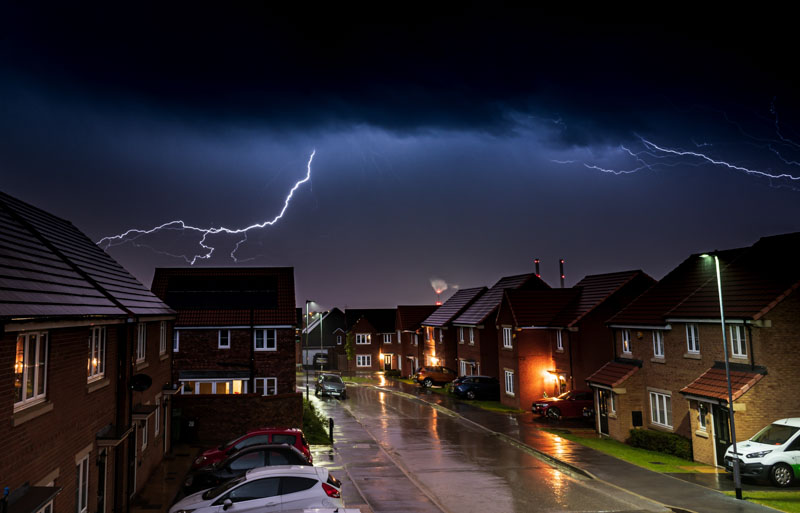Preparing your home for natural disasters like lightning strikes is a common concern for homeowners. While there is no way to prevent lightning, there are ways to combat its ability to damage your home. Since lightning occurs more often than many other types of natural phenomena, it’s wise to know how you can lightning-proof your property and keep your family safe in the event of an emergency. Here are simple few ways you can safely protect the exterior and the interior of your home from the impact of lightning strikes.

In This Article
Invest in a Home Lightning Protection System
An effectively installed home lightning system may include lightning rods, grounds, surge protectors, bonds, and main conductors, which supply a low resistance route to protect against the lightning’s hazardous electricity. Investing in a lightning system for your home will give you the peace of mind that comes with knowing you’re prepared for an emergency.
Protect Your Home’s Exterior
Even though lightning rods cannot block lightning from striking, they do help direct it away from your property. Make sure the lightning rods connected to your home’s roof are installed into the surface and fastened tightly with a cable. Since lightning often moves across the ground, make sure the tall trees in your yard are at a safe distance from your home. You may want to consider having a professional come in and do a thorough evaluation of your home and landscape to ensure adequate protection from the threat of lightning.
Unplug Electrical Appliances
In conjunction with causing fires, lighting can ruin many electronics in your home. If lightning utilizes your home’s electrical system as a first or second pathway, it can ruin both your electrical and non-electrical devices. Be sure to unplug all devices when there is a lightning storm warning. This will keep your equipment safe in the event of a power surge. In addition, keep yourself safe by refraining from using any electrical appliances and staying away from all plumbing fixtures such as sinks, faucets, and toilets until the storm passes.
Use Surge Protectors Instead of Power Strips
While a power strip plugs into an electrical outlet and enables you to power several electrical appliances, it does not shield these devices from damage resulting from a power surge. A surge protector allows you to plug in and power up several different devices while also protecting them from harm in the event of a surge.
